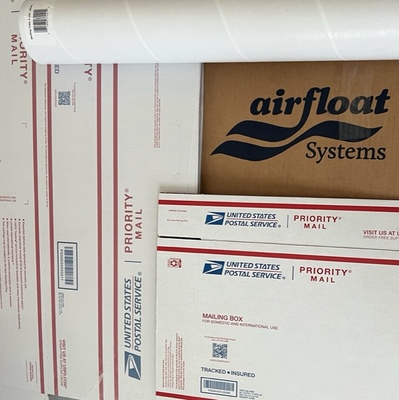Sale on canvas prints! Use code ABCXYZ at checkout for a special discount!

Here are some lessons learned chairing a national pastel art exhibition and personal experience in shipping artwork. What things do you need to consider when shipping artwork? First, determine if you will send it framed or unframed. How will it be boxed and shipped? Who is providing the shipping service? And finally, pay for tracking the package and make sure you have enough insurance coverage for damages or lost artwork.
Unframed Artwork.
This is an easier way to send artwork. Pastel artwork (or other artwork for that matter), can be placed in an art archival bag or covered with glassine, sandwiched between two pieces of foam core board. Then place this sandwich into a box to ship. The US Post Office has free priority boxes in various sizes. Then pay for the shipping as the box rate will include tracking. You can also make your own cardboard shipping box. Instead of a box, some artists put the sandwiched artwork straight into a plastic sleeve to ship. However, I like my artwork to be double protected. You can find different sizes of archival bags and glassine at art stores and through online searches. This step is important for delicate artwork like pastel, charcoal, etc.
Another way to send non-framed artwork is by rolling it into a tube. This is ideal if you are shipping a long distance to a buyer or the gallery will frame the artwork for you. Perhaps obvious, but this method is not intended for thick applications of paint or artwork mounted to a board. And Yes! Pastel artwork can be sent this way. You will want to lightly spray with fixative before placing the artwork in glassine (bag or sheet). Butcher’s paper, wax side down facing the artwork, also works. Tape “pull” tabs on the back of artwork so you can easily remove the artwork from the roll and tube. Roll the artwork slowly. You want to make sure you don’t crinkle the paper. Don’t roll it too tight. You can layer multiple pieces of artwork into the roll. If you decide you want to double protect the artwork, place the roll into another box. You can find shipping tubes online and locally at shipping stores. I found shipping tubes fit nicely into triangle boxes called Dual-Use Priority Mail (medium or large) tubes made by the US Post Office (boxes are free by the way!). Shipping costs are typically lower in total than sending a large non-bendable flat box.
You don’t have to use the US Post Office. You can use another shipping service that meets your needs. Just make sure you pay for tracking services and insure the artwork.
Framed Artwork.
Most show chairs will tell you to ship artwork with acrylic instead of glass. The safest bet shipping artwork in a frame is to pack in an Airfloat System Strong Box or Uline Deluxe Artwork Shippers with 2-3 inches of padding on all sides. Follow instructions provided. These boxes are a good investment, and reusable for those shipping artwork to galleries. Check with your art society to see if your membership qualifies for a discount with the store. You will want to use one of the big shipping companies like FedEX or UPS for shipping services. The show’s prospectus will probably state this as well. Take photos of what you are sending, get a tracking number and insure the artwork.
Horror Stories?
What happens if you ship and the glass breaks? Depends on the show chair and gallery. Some exhibits will disqualify you and prevent you from showing. Ugh! Broken glass can cause scratches or damages to the artwork. We had one box rerouted because it was damaged on the way to the shipper. The glass busted somewhere during the trip! Good thing the artist paid for shipping insurance and took pictures. She was able to get the glass fixed to hang it in the show.
One shipper ran plastic shipping tape across the glass and frame to hold the artwork in place. When the tape was removed, some of the gold paint from the frame also came off. We had to talk to the artist and gallery manager to see what to do next. Don’t tape the frame, ok?
One last thing. I heard from artists that they shipped pastel paintings to juried exhibitions to find out that their painting turned to dust during shipment. Obviously, the gallery could not show the painting as only a ghost version of it remained on the paper. Would this have been prevented by underpainting or using a fixative? Refer to my blogs on underpainting and fixatives. Thanks!